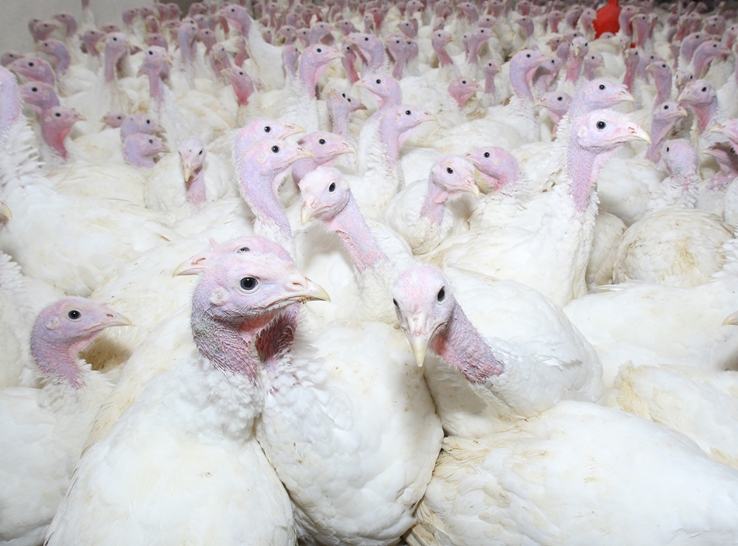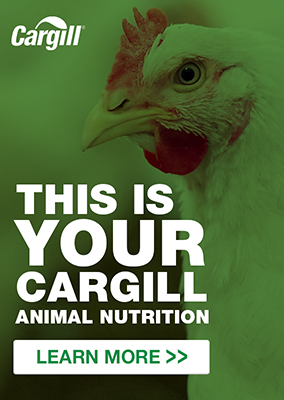Advanced microbiome analysis using non-lethal sampling and machine learning can guide changes on broiler farms that lead to earlier gut maturation in birds and performance gains, according to research using the technology with multiple flocks.
Although the links between poultry gut microbiomes and performance are well-established, what has been less clear is how to interpret microbiological data and act on microbiome insights, explained Vivek Kuttappan, DVM, PhD, poultry technology lead, micronutrition and health solutions for Cargill Animal Nutrition.
“When you run analysis, you can have thousands of bacteria there, and you may see some going up and some going down. But you don’t really know how that is going to affect the birds’ performance,” he said.
This dilemma led Cargill to develop Galleon™, a microbiome assessment platform that uses a microarray assay to process cloacal swabs from birds, compare the results with one of the largest poultry microbiome databases available and employ machine-learning algorithms to relate flock microbiomes to nutrition, health and bird-management practices.
“Galleon is mainly intended to navigate us through this large amount of data from a farm and get meaningful insights, which can help lead to changes to support performance,” he added.
Testing gut maturation
One of the main learnings from using the technology is evident when comparing farms that are performing well with those that are underperforming — gut-microbiome maturation develops more systematically in birds on the high-performing farms, he said.
This difference in gut-microbiome maturation was proven in a feed-additive study using commercial broilers.1
In the work, Kuttappan’s team randomly assigned birds to be fed the supplement Dia-V® MBPRO on top of a base corn-soy diet, alongside a control group that was fed just the base diet. The product is a combination of the Saccharomyces cerevisiae postbiotic and essential oil compounds.
The scientists recorded bodyweight and feed conversion and took cloacal samples at 21 and 33 days of age for microbiome analysis using Galleon.
They found that feeding birds Dia-V MBPRO resulted in improved bodyweight, feed-conversion ratio and breast-meat yield, all to statistical significance compared to the control group.
Perhaps the most telling findings, however, related to the microbiome composition at different stages of the study.
“We saw that at 21 days, the microbiome profile differs between the control and the birds fed the supplement. But at 35 days, when the birds are older and reaching their market age, their microbiome looks similar. So basically, they reach the same goal but at different rates,” Kuttappan said.
“We observed another interesting finding: At 21 days of age, the microbiomes of supplement-treated birds were closer to the 35-day results for the control birds. This means that the product is helping accelerate the gut microbiome-maturation process so that the microbiome reaches that more resilient population early on in life.”
Pursuing deeper understanding
Accelerated gut-microbiome maturation and improved performance were the headline results. But using Galleon’s AI model and huge comparative database, the scientists were able to glean deeper insights.
They found that the supplement appeared to be promoting butyrate-producing bacteria, which contribute to gut health, while managing undesirable bacteria such as the opportunistic pathogen Clostridium perfringens and Listeria, which can cause foodborne illness in humans.
In the latter case, Listeria is a type of bacteria that uses protein in the gut to flourish. Its lack of presence in the hindgut suggests that Dia-V MBPRO has a role in improving protein digestibility in the upper digestive tract.
Broad applications
Galleon is being used in several other areas of Cargill’s work, Kuttappan continued, including research exploring the effects of organic acids or essential-oil-based products.
Another approach is employed by the company’s feed formulation team, which tends to start from a microbiome analysis of a farm to look at the overall composition of diets and what needs to change.
An important factor to consider in this, he noted, is that Galleon is not tied to a specific product, so there’s no prerogative to sell anything based on the results.
Further uses might include comparing poultry houses with different performances, analyzing microbiota associated with food-safety concerns and assessing management choices such as ventilation and vaccination.
One advantage of the technology is that it doesn’t require the lethal sampling of any birds, which can humanely enable clearer insights into microbiome changes over time.
“Collecting samples from the ileum or ceca of the bird may require sacrificing the bird to collect those samples. The disadvantage there is you’re selecting one bird, sampling and analyzing. If you want to look at a different time point, you will be selecting another bird,” Kuttappan explained.
“The problem is that this is so uneven, with bird-to-bird variation, so you need to have ways to remove the noise and look at what is happening,” he added.
“That is Galleon’s advantage; it’s non-invasive. You just collect a cloacal swab. The bird is alive, and you can track the same bird, looking at different time points.”
Ultimately, microbiological insights bring financial savings for producers, he said, pointing to the example of a layer customer who had birds with an unusually high feed intake but static production performance, meaning they were losing money.
“When we went there, we identified that they have some problems with enteritis, and we looked at some bacteria populations using Galleon,” he said.
“Based on the analysis, we made changes in the feed formulation and used a combination of a couple of additives, the result being that we were able to reduce the feed intake while keeping production the same. This meant that the customer made considerable savings.”
1 Kuttappan VA. Impact of a novel combination of postbiotic and essential oil compounds to support gut microbiome maturation and performance in broilers. 2024 Poultry Science Association Annual Meeting.
Editor’s note: Content on Modern Poultry’s Industry Insights pages is provided and/or commissioned by our sponsors, who assume full responsibility for its accuracy and compliance.








